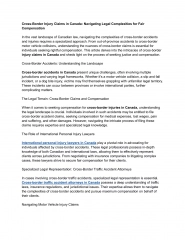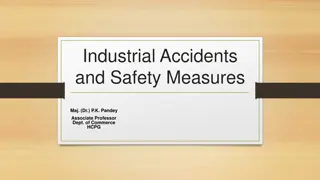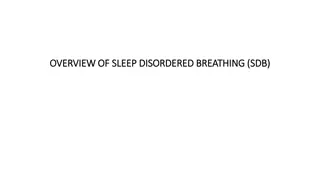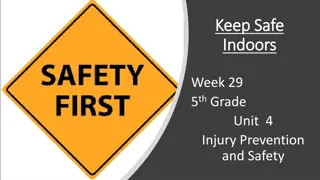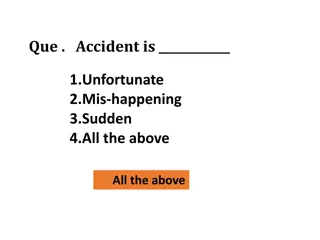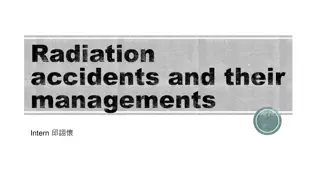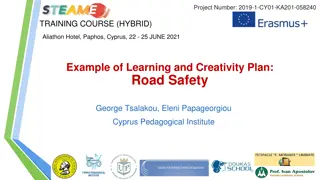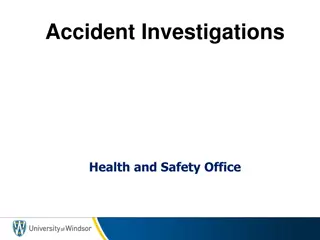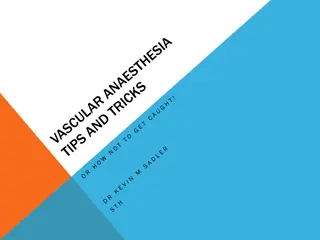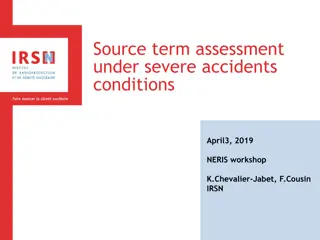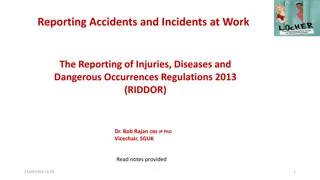Understanding Cerebrovascular Accidents (CVAs) and Their Effects
Learn about the fundamentals of CVAs, the common types - Ischemic and Hemorrhagic, left brain vs. right brain functions, effects on different brain hemispheres, and assessments and treatments for patients. Explore insightful questions related to post-CVA observations. The content also covers various assessments like COPM, AMPS, and treatment strategies for limb and trunk control issues post-CVA.
Download Presentation

Please find below an Image/Link to download the presentation.
The content on the website is provided AS IS for your information and personal use only. It may not be sold, licensed, or shared on other websites without obtaining consent from the author. Download presentation by click this link. If you encounter any issues during the download, it is possible that the publisher has removed the file from their server.
E N D
Presentation Transcript
Fundamentals of CVA May 29,2020
CVA or Stroke What does CVA stand for? Cerebrovascular accident What are the two common types of CVAs? Ischemic: Blocks blood flow to the brain, causing lack of oxygen to the brain Hemorrhagic: Blood vessel in the brain burst, causing blood to pool. Which one is more common? Ischemic TIA (Transient ischemic attack)- interruption of blood flow to the brain. Mini stroke.
Left Brain vs. Right Brain functions What are some left brain functions Logic, math/science, words and languages, detailed oriented, and safe What are some right brain function Uses feelings, spatial perception, risk taking
Effects of CVA What are some effects of the Left hemisphere? Right side neglect, Apraxia, difficulty with math, acts slowly, cautious What are some effects of the right hemisphere? Left side neglect, difficulty swallowing, short attention span, impulsive, denies deficits What are some effects of the cerebellar? Dysarthria, ataxia, balance deficits.
What type of assessments would you perform? COPM (Canadian Occupational Performance Measure) AMPS (Assessment of Motor and Process Skills) Kohlman Evaluation of Living Skills Barthel Index NIH Stroke Scale
Treatment Loss of trunk control Proper positioning, mirror for visual feedback Increased risk of falls Education, dynamic weight shifting, set-up occupations in arm length. Difficulty with limb control Trunk strengthening, set-up occupations in arm length, compensatory strategies and environmental adaptations
Question 1 During the initial evaluation of a patient who has had a right CVA, an OTR observes left shoulder elevation and elbow flexion when the patient yawns. The OTR should document this finding as a/an: A.)associated reaction B.) flexor synergy C.)extensor synergy D.)asymmetrical tonic neck reflex
Question 2 A patient who had a left CVA a month ago reports constant pain in the right arm. The OTR notes that the patient s right hand is hypersensitive and the skin is mottled. This condition is indicative of: A.)a hand contracture B.)complex regional pain syndrome C.)a brachial plexus injury D.)thalamic pain syndrome
Question 3 A patient who has had a right CVA reports frequently losing the place on the page when reading. The most important compensatory strategy for this patient to use is: A.)visual cueing B.)repositioning the book C.)enlarged print D.)reading out loud
Question 4 An OTR determines that a patient who has had a left CVA and who uses a wheelchair could safely retrieve items in the kitchen by using a reacher. The most effective instruction technique would be to: A.)demonstrate the use of a reacher in the clinic kitchen B.)incorporate the use of a reacher in assisting with meal preparation C.)provide a written instruction sheet with illustrations showing how to use a reacher D.) give verbal feedback as the patient practices with a reacher in the clinic
Question 5 A patient who has had a CVA is very distractible and requires continual verbal and tactile cues to eat an entire meal. The first step in grading this self-feeding task is to: A.)position a tabletop mirror at midline B.)minimize extraneous visual and auditory stimuli C.)establish a time limit for completion of the meal D.)reduce the number of tactile cues
Question 6 A patient who has had a CVA requires supervision when performing ADL. The family is available in the evening and at night but cannot provide assistance during the day. The best discharge recommendation for this patient would be: A.) participation in an adult daycare program B.)transfer to another rehabilitation facility C.)long-term placement in a skilled nursing facility D.)home health OT
Question 7 An OTR is evaluating the ADL skills of a patient who had a right CVA. When asked to use a toothbrush, the patient picks up the toothbrush and attempts to use it as a comb. This behavior is most likely a sign of: A.)constructional apraxia B.)recent memory loss C.)sequencing impairment D.)ideational apraxia
Question 8 patient who had a CVA has fair dynamic sitting balance, but is unable to complete bathtub transfers safely without assistance. The OTR should recommend this patient use a A.)bathtub board B.)wheeled shower-commode chair C.)transfer tub bench D.)commode placed inside the bathtub
Question 9 An OTR is treating a patient who has had a right CVA. Mild edema and spastically are present in the involved arm and the patient has no voluntary movement. The patient is working on meal preparation while standing at a kitchen counter. Using the neurodevelopmental frame of reference, the OTR should encourage the patient to position their involved extremity: A.) elevated above the heart B.) down at the side C.)weight bearing on the counter D.)supported in a sling
Question 10 A patient who has had a CVA has mild motor and sensory loss in the upper extremity. The patient tells the OTR that the lotion being provided for sensory input is causing a skin rash. The OTRs best response would be to: A.) have the patient rinse with water after using lotion B.)refer the patient to an allergist C.)use alternating heat and cold prior to applying lotion D.)rub the arm with objects of varied textures instead of lotion



